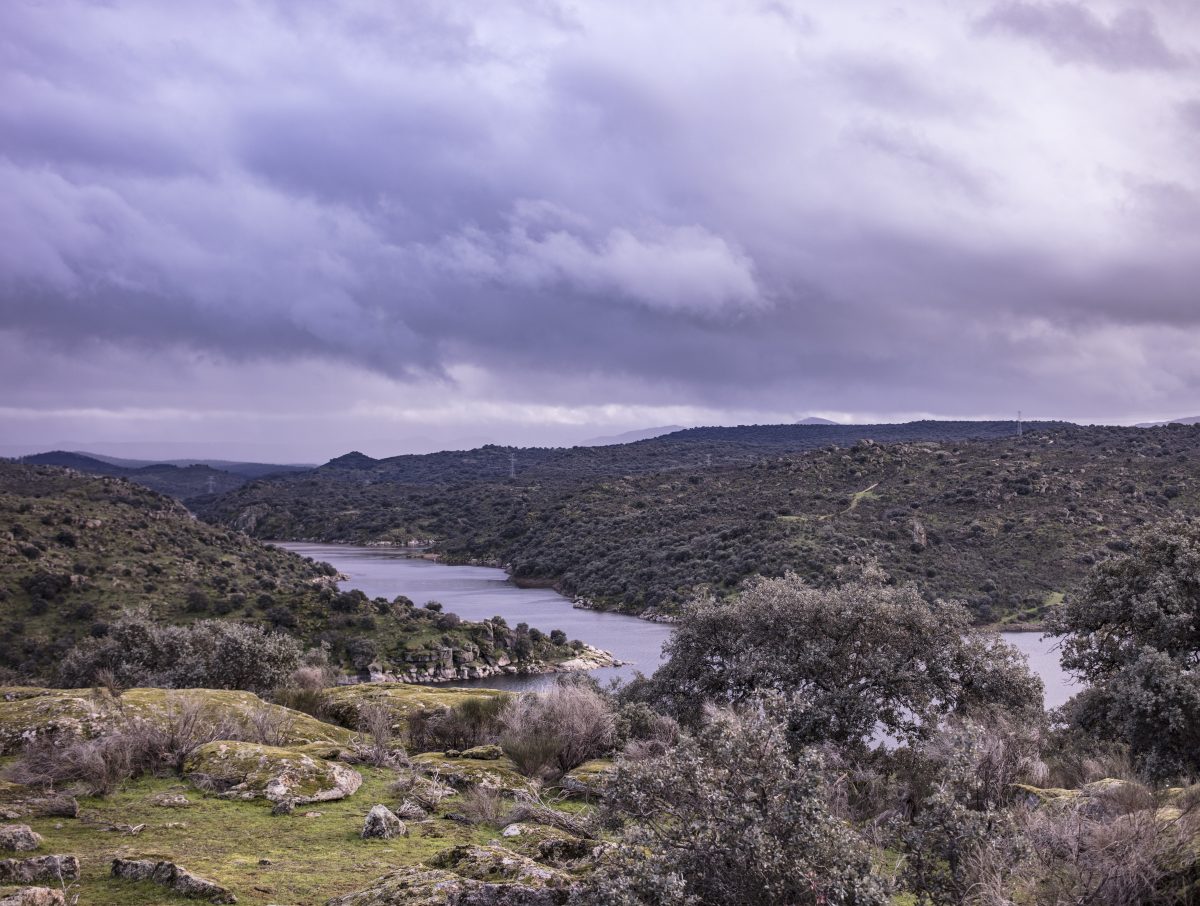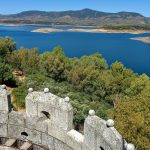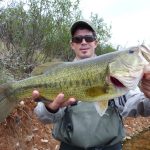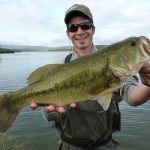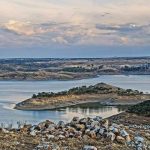Characteristics of Valdecañas lake
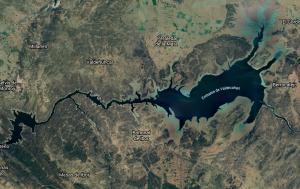
With a capacity of 1446 hm3 and a flooded area of 7300 hectares, Valdecañas lake is the second largest in the province, as well as Alcántara in the Tajo River. Electricity production, irrigation and supply are its main uses. Do you want to know its level in real time? Click here.
The water is a little clearer than Alcantara, but in summer important levels of tubidity are also reached. Their levels also fluctuate quite a bit due to the peaks in electrical energy production. Normally the average levels range from 500 to 1200 hm3.
Bottom composition and structures
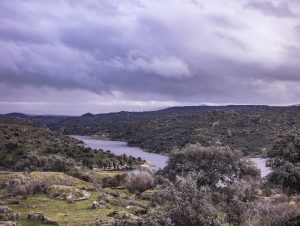
In this case the mother rock of most of the reservoir is granite, finding the typical balls, although we also find slate near the dam. The slopes are generally moderate, although we find two very different areas.
Over the first area, closer to the dam, the reservoir is really boxed in, finding a very long section in which the reservoir is very narrow in which cuts alternate with transition areas and tiny creeks.
In the second area, which reaches the tail, the reservoir opens up a lot and is full of beaches, making it ideal for fishing the abundant cyprinids that populate it.
In this area the mother rock is composed of conglomerates and sandstones, generally very degraded and eroded originating large sandy beaches.
Vegetation and cover
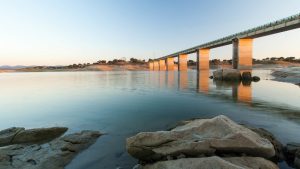
Both the wooden covers (trees and bushes) and the underwater vegetation are scarce in the reservoir, finding only some weeds in the mouths of creeks, in the area closest to the main tail. Abrupt changes in level make it difficult for this type of plant to establish itself.
Main fish species
Like Alcantara, the diversity of species we can find is really high, highlighting the following:
- Black Bass. Good population of black bass, although it is not the ideal place to try to beat our record, we can spend entertaining days.
- Zander. It has inhabited the reservoir for many years now, the population is also stable and abundant.
- Catfish. Present for several years, we can find larger and larger specimens, some of which have already been captured above 2 m.
- Pike. It is not particularly abundant in the reservoir, although we have years in which there are more catches than others.
- Iberian barbel. Very good population of barbels, we can tempt them with lures or other techniques (feeder, match, carpfishing, fly …)
- Carp. Carp are also very abundant in this reservoir, although most are medium sized and do not usually reach really large sizes.
Baitfish in Valdecañas lake
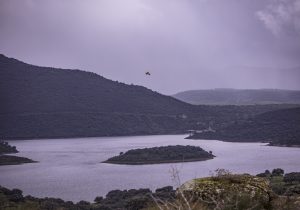
The bleak is the main species of baitfish, although we have very high densities of cyprinids, which also offer a good source of food during their first months of life. Carps, crucian carps and barbels are the most abundant, although there were also once large schools of nase whose populations have been drastically reduced.
We also have little channel catfish, sunfish and of course a lot of crawfish as well.
Access and navigation
Navigation is allowed with significant limitations (see map of restrictions) due mainly to the preservation of the breeding grounds of some protected birds. It should be noted that navigation with float tubes and pontoons requires a permit, as in the case of the other reservoirs in the Tajo basin.
The area closest to the dam is complicated for fishing from the shore, both because of its limited access and because of its steepness. The area that is most open to the main creek is easily accessible.

